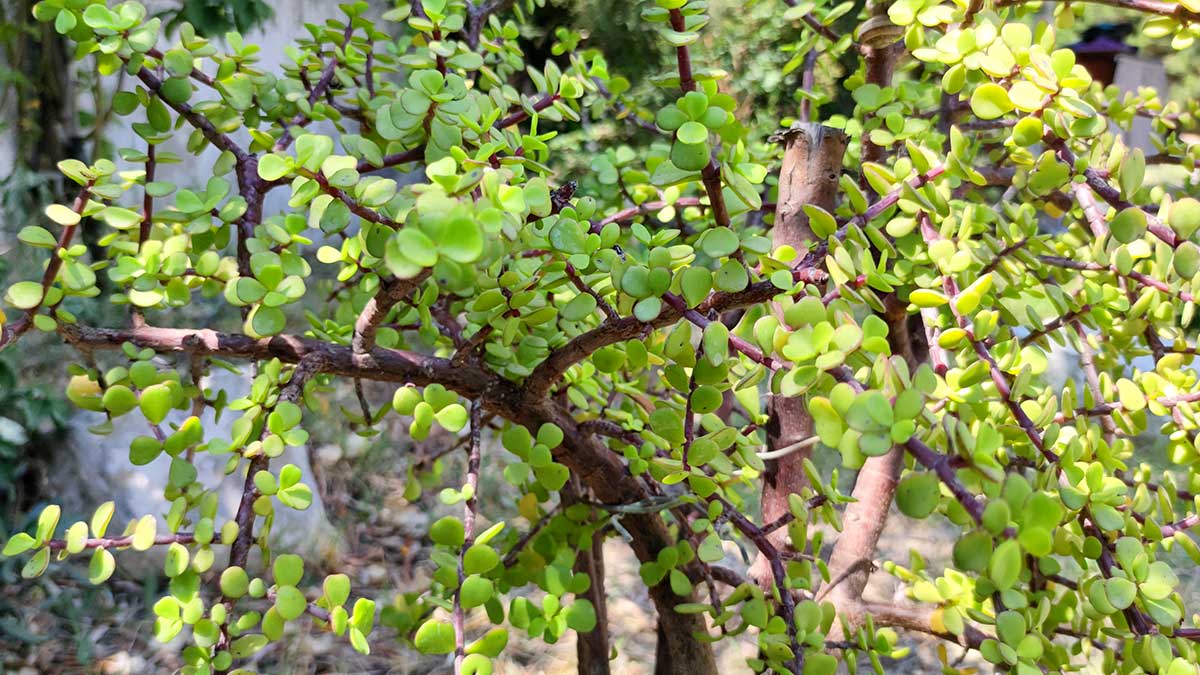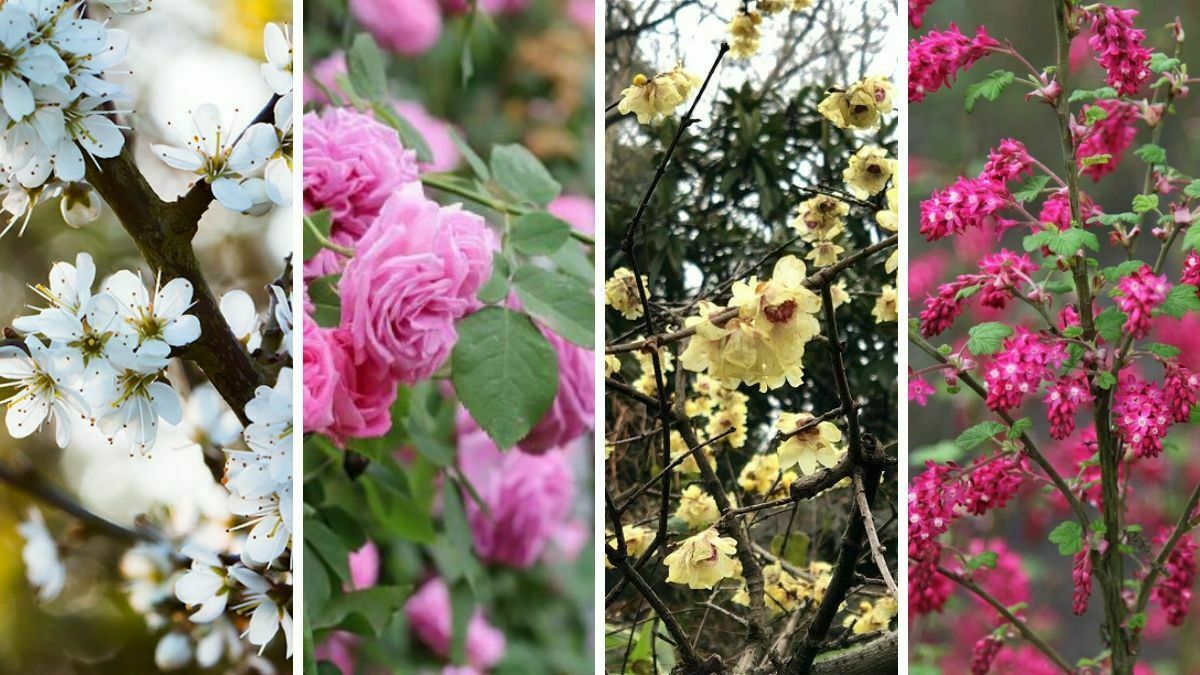Did you know that there is a succulent plant that can help fight climate change by absorbing more carbon dioxide than most tropical forests? This plant is called Portulacaria afra, and it is native to South Africa, where it is known as elephant bush, porkbush, purslane tree, or spekboom.
It is a small-leaved shrub with reddish-brown stems and pink flowers that can grow up to 5 meters tall in its natural habitat. It is also edible, drought-tolerant, fire-resistant, and easy to propagate.
In this article, you will learn everything you need to know about Portulacaria afra, how to grow it, how to care for it, and how to use it for various purposes. You will also discover the amazing benefits of this plant for the environment and your health.
Whether you want to grow Portulacaria afra as a houseplant, a bonsai, or a landscape feature, you will find useful tips and tricks to make the most of this versatile succulent. By the end of this article, you will be inspired to add Portulacaria afra to your plant collection and share its beauty and benefits with others.
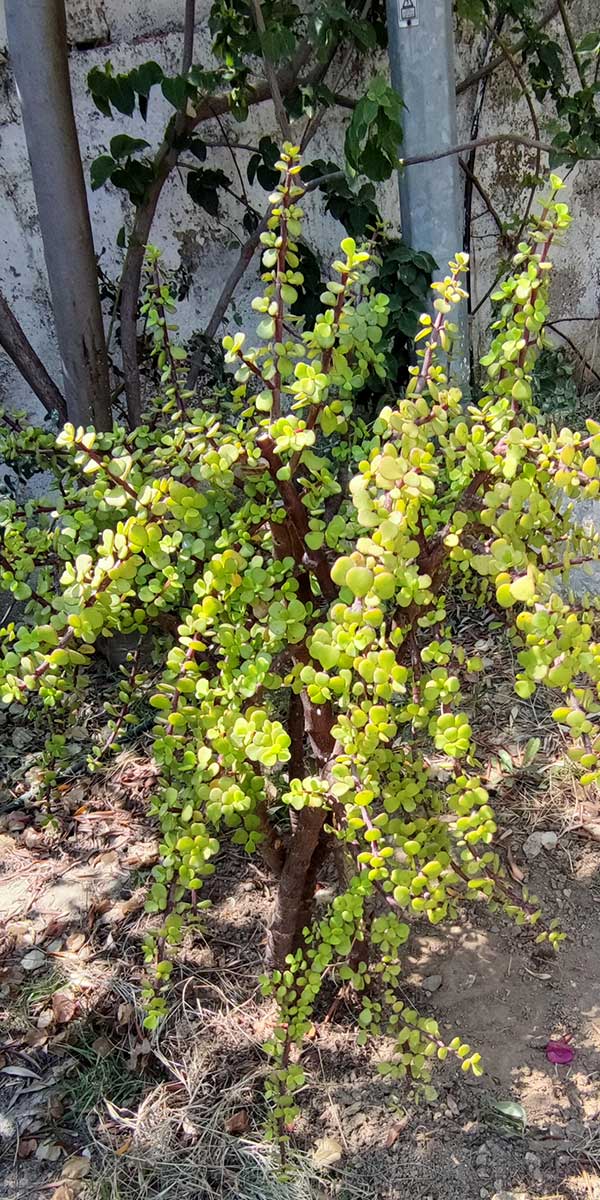
What is Elephant bush (Portulacaria Afra)?
Elephant bush is a small-leaved succulent plant native to South Africa. It has a reddish stem and green or variegated leaves that are round and fleshy. It can grow as a shrub or a small tree, reaching up to 15 feet tall in the wild, but it usually stays much smaller in cultivation. It is a popular plant for bonsai, xeriscaping and hanging baskets because of its drought tolerance and trailing habit. Some of its plant features are:
- It produces pink or white star-shaped flowers in clusters at the end of the stems, but rarely indoors.
- It is a favorite food source for many animals, especially elephants, hence its common name.
- It is an edible succulent that has a sour or lemony flavor and can be used in salads or stews.
- It is a carbon-storing plant that can help reduce greenhouse gas emissions and combat climate change.
The lifespan of Elephant bush
The lifespan of the elephant bush as a plant is not very clear, but some sources suggest that it can live up to 50 years with proper care.
How to Grow Portulacaria Afra
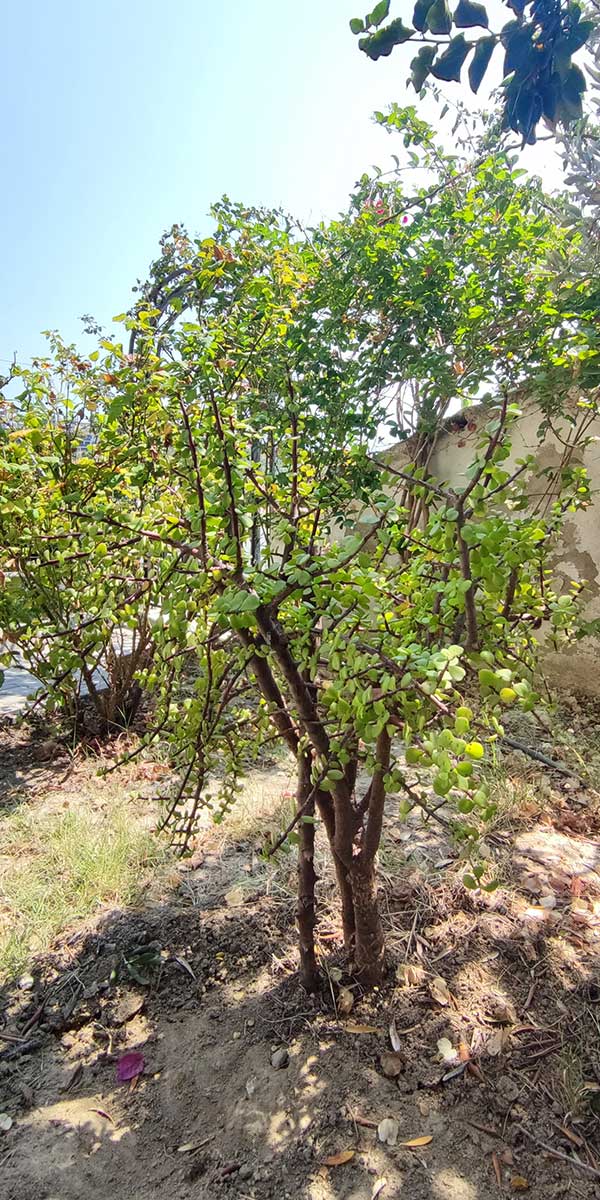
Growing Portulacaria afra is not difficult, as this succulent plant can adapt to various conditions and environments. However, there are some tips and tricks that can help you grow a healthy and beautiful Portulacaria afra in your garden or home.
Location
The first thing you need to consider is the location of your Portulacaria afra. This plant prefers a sunny and warm spot where it can receive at least five to six hours of bright indirect light per day. Avoid exposing it to direct sunlight, as this can burn its leaves and cause stress.
If you grow Portulacaria afra indoors, place it near a south, east, or west-facing window that has a shade you can draw to block the harsh rays. If you grow Portulacaria afra outdoors, choose a site that has some protection from the midday sun, such as under a tree or a pergola.
Soil
Portulacaria afra likes a well-draining soil that is slightly acidic (pH 5.6 to 6.5). You can use a cactus/succulent potting mix or make your own by mixing equal parts of sand, gravel, and compost. Avoid using soil that is too rich, heavy, or moist, as this can cause root rot and fungal infections. You can also add some perlite or pumice to improve the drainage and aeration of the soil.
Watering
This plant is drought-tolerant and can store water in its trunk and leaves, so it does not need frequent watering. However, it does not like to be completely dry either, as this can cause wilting and leaf drop.
The best way to water your Portulacaria afra is to follow the “soak and dry” method, which means that you should water it thoroughly until the water drains out of the bottom of the pot and then wait until the soil is completely dry before watering again.
You can check the moisture level of the soil by inserting your finger into it or using a moisture meter. During the winter, when the plant is dormant, you should reduce the watering frequency and amount, as the plant needs less water at this time.
Propagation of Portulacaria afra
This plant is very easy to propagate from stem or leaf cuttings. All you need to do is to take a healthy cutting from an older plant and let it dry for a few days until a callus forms on the cut end. Then, you can insert the cutting into moist soil or water and wait for the roots to develop. You can also dip the cutting into the rooting hormone before planting it to speed up the process. Once the cutting has rooted, you can transplant it into a larger pot or into the ground.
Let’s dive more into the propagation process.
What is the best way to propagate Elephant Bush?
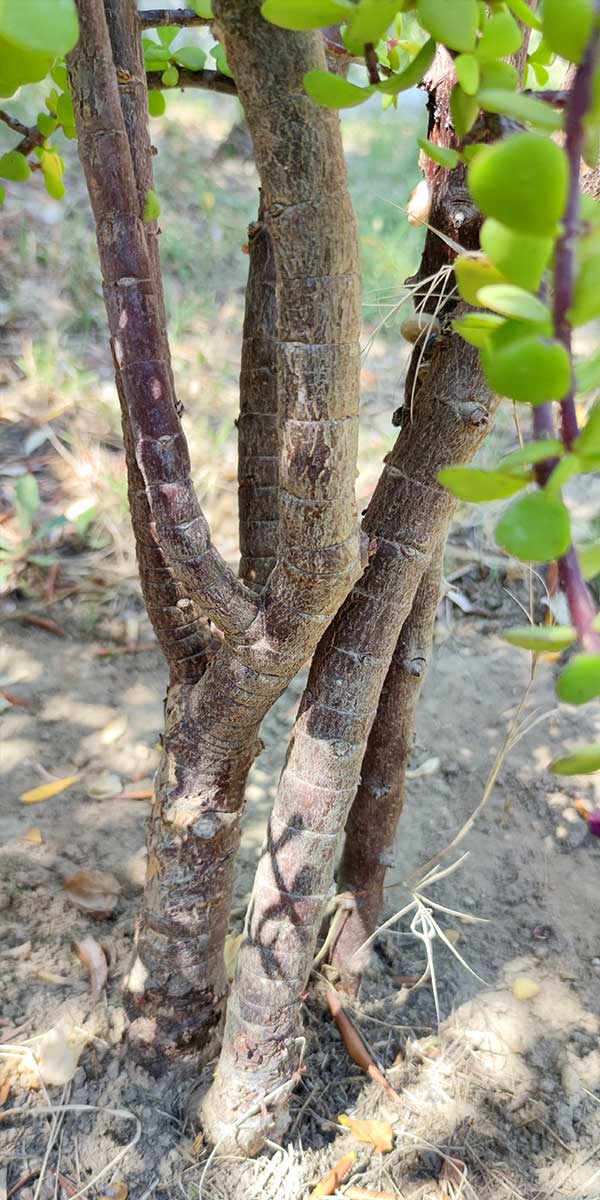
- The best way to propagate Portulacaria afra is by using stem or leaf cuttings during the spring or summer time when the plant is actively growing. Here are the steps you might need to follow:
- Choose a healthy stem or leaf from an older plant and cut it with a clean and sharp knife or scissors. The stem-cutting should be about 10 to 15 cm long, and the leaf-cutting should be whole and plump.
- Remove the leaves from the lower part of the stem cutting, leaving about 2 to 4 cm of bare stem. If using a leaf cutting, you don’t need to remove anything.
- Let the cutting dry for a few days until a callus forms on the cut end. This will prevent rotting and infection.
- Dip the cut end of the cutting into rooting hormone powder or gel to speed up the rooting process. This is optional but recommended.
- Insert the cutting into moist soil or water and wait for roots to develop. You can use a cactus/succulent potting mix or make your own by mixing sand, gravel, and compost. You can also use a glass jar or bottle filled with water, but make sure to change the water every few days to prevent algae growth.
- Place the cutting in a bright spot, but avoid direct sunlight, as this can burn the cutting or cause it to dry out too quickly.
- Water the cutting sparingly, only when the soil feels dry to the touch. Do not overwater or underwater, as this can cause rotting or wilting.
- After 8 to 10 weeks, you should see new growth and roots on your cutting. You can then transplant it into a larger pot or into the ground.
You may simply cultivate extra Portulacaria afra plants by following these procedures and sharing them with your friends.
How to Care for Portulacaria Afra
Portulacaria afra is a low-maintenance plant that does not require much attention or pampering. However, some basic care tips can help you keep your Portulacaria afra healthy and happy.
Pruning
One of the most important aspects of caring for Portulacaria afra is pruning. Pruning can help you shape your plant, encourage branching and flowering, and remove any dead or diseased parts.
You can prune your Portulacaria afra anytime, but the best time is in spring or summer when the plant is actively growing. Use sharp and clean scissors or shears to cut off any unwanted stems or leaves. You can also pinch off the growing tips to promote bushiness.
If you want to turn your Portulacaria afra into a bonsai, you can prune it more frequently and use wires to bend and train the branches.
Fertilization
Another important aspect of caring for Portulacaria afra is fertilizing. Fertilizing can provide your plant with extra nutrients and boost its growth and health.
You can fertilize your Portulacaria afra once a month during the spring and summer when the plant is in its growing season.
Use a balanced or low-nitrogen fertilizer, such as 10-10-10 or 5-10-10, diluted to half-strength. Avoid fertilizing your Portulacaria afra in winter, when the plant is dormant and does not need much feeding.
Repotting
Repotting can give your plant more room to grow, refresh the soil, and improve drainage. You can repot your Portulacaria afra when it becomes root-bound or outgrows its container, which may happen every two to three years.
Choose a pot that is slightly larger than the previous one, with drainage holes at the bottom. Use a cactus/succulent potting mix, or make your own by mixing sand, gravel, and compost. Gently remove your plant from its old pot and shake off any excess soil from the roots.
Place it in the new pot and fill it with fresh soil, leaving some space at the top for watering. Water your plant well after repotting and place it in a bright spot.
Portulacaria Afra Plant diseases and problems
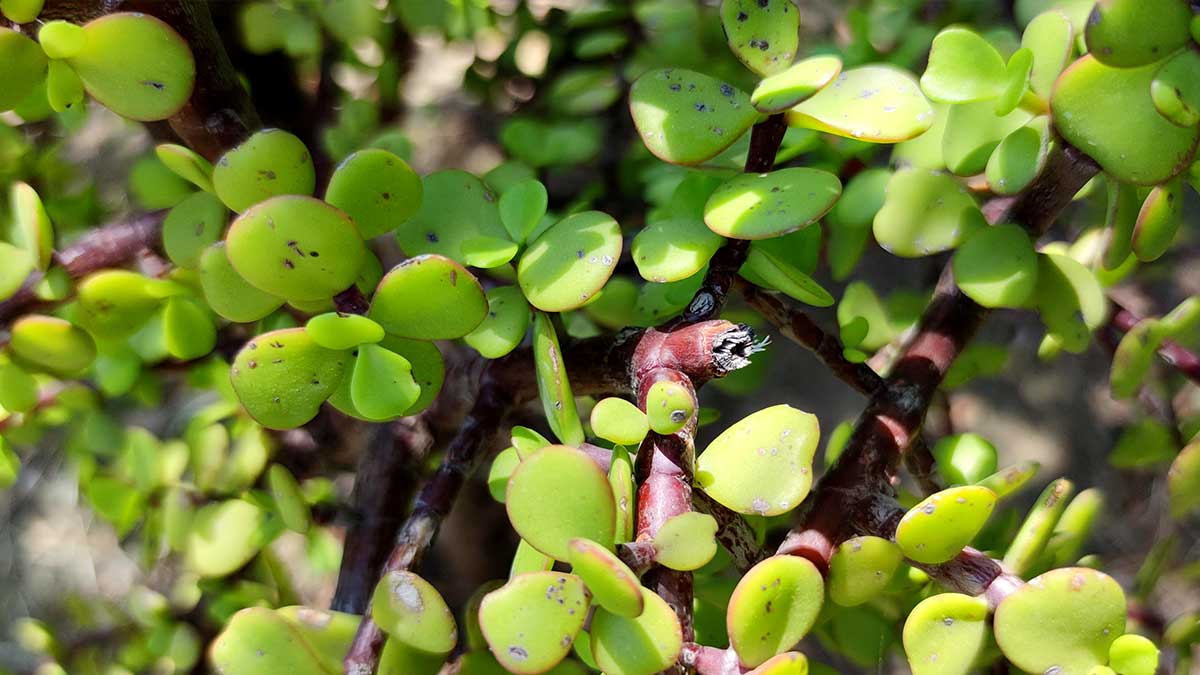
Portulacaria afra is a resilient and adaptable plant that can withstand various environmental conditions and stresses. However, it is not immune to some diseases and problems that may affect its health and appearance. Some of the common diseases and problems of Portulacaria afra are:
Overwatering
This is the most common cause of root rot, which is a fungal infection that causes the roots to decay and lose their ability to absorb water and nutrients. Overwatering can also cause the leaves to turn yellow, swell, discolor, or fall off.
To prevent overwatering, you should water your Portulacaria afra only when the soil is completely dry, use a well-draining soil and pot, and reduce watering frequency and amount during winter.
Underwatering
This can cause the leaves to dry up, shrivel, and eventually fall off. Underwatering can also make the plant more susceptible to pests and diseases.
To prevent underwatering, you should water your Portulacaria afra thoroughly until the water drains out of the bottom of the pot, and check the soil moisture regularly with your finger or a moisture meter.
Pest infestation
Portulacaria afra can be attacked by some pests, such as mealybugs, whiteflies, scale insects, and spider mites. These pests can suck the sap from the plant and cause damage to the leaves and stems. They can also transmit diseases or secrete honeydew that attracts fungal growth.
To prevent or treat pest infestation, you should inspect your plant regularly for any signs of pests, isolate the infected plant from other plants, remove the pests manually or with a cotton swab dipped in alcohol, spray the plant with insecticidal soap or neem oil, or use biological control agents such as ladybugs or lacewings.
Fungal infection
Portulacaria afra can be affected by some fungal diseases, such as powdery mildew, black spot, or leaf spot. These diseases can cause white, black, or brown spots on the leaves or stems and reduce the plant’s vigor and growth.
To prevent or treat fungal infection, you should avoid overwatering or splashing water on the leaves, provide good air circulation around the plant, remove any infected parts and dispose of them properly, and apply a fungicide spray or a baking soda solution to the plant.
How can I prevent root rot in my Portulacaria afra plant?
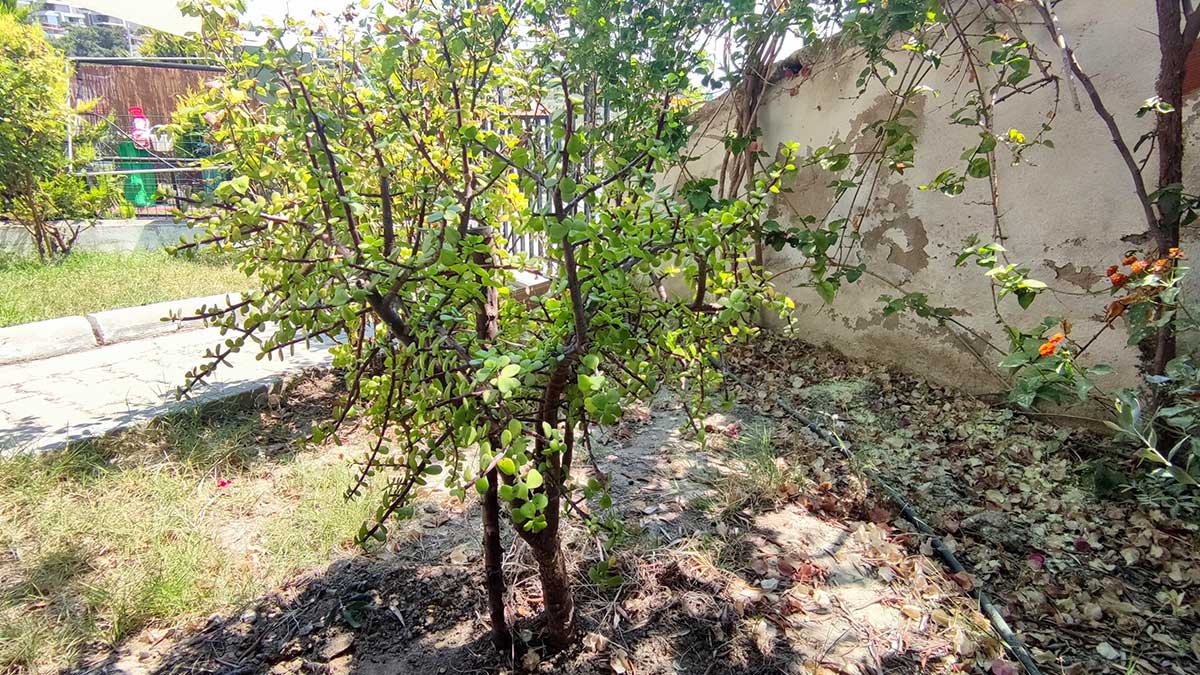
Root rot is a common problem for elephant bush (Portulacaria afra) plants, especially if they are overwatered or planted in poorly draining soil. Root rot is a fungal infection that causes the roots to decay and lose their ability to absorb water and nutrients.
This can lead to wilting, yellowing, dropping, or shriveling of the leaves and eventually death of the plant.
To prevent root rot in your Portulacaria afra plant, you should follow these steps:
Use well-draining soil that is slightly acidic (pH 5.6 to 6.5). You can use a cactus/succulent potting mix or make your own by mixing equal parts of sand, gravel, and compost. You can also add some perlite or pumice to improve the drainage and aeration of the soil.
Choose a pot that has drainage holes at the bottom and is slightly larger than the root ball of your plant. Avoid using pots that are too big, too deep, or made of plastic, as they can retain too much moisture and cause root rot.
Water your Portulacaria afra only when the soil is completely dry, which may vary depending on the season, the climate, and the pot size. A good way to check the soil moisture is to insert your finger into it or use a moisture meter.
You should water your Portulacaria afra thoroughly until the water drains out of the bottom of the pot, and then wait until the soil is dry again before watering.
Reduce watering frequency and amount during winter, when the plant is dormant and needs less water. Watering once every three to four weeks may be enough to prevent root rot. Keep in mind that drier and hotter environments will require more frequent watering than cooler and more humid ones.
Monitor your plant for any signs of root rot, such as wilting, yellowing, dropping, or shriveling of the leaves. If you suspect root rot, gently remove your plant from its pot and inspect the roots. Healthy roots should be firm, white, and plump.
Rotten roots will be soft, brown, and mushy. If you find any rotten roots, cut them off with sharp and clean scissors or shears. You can also dip the healthy roots in a fungicide solution to prevent further infection. Then repot your plant in fresh soil and a clean pot.
How to Use Portulacaria Afra
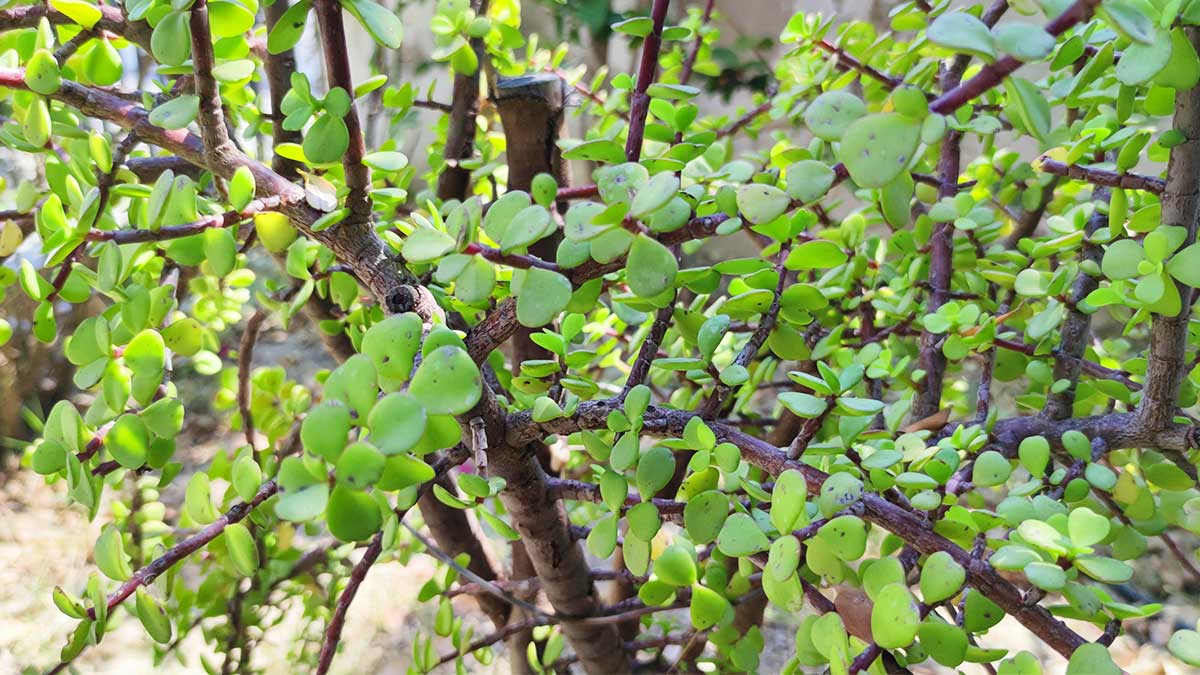
Portulacaria afra is not only a beautiful and easy-to-grow plant but also a useful and beneficial one. There are many ways you can use Portulacaria afra for various purposes, such as food, medicine, and air purification.
One of the most popular uses of Portulacaria afra is as an edible plant. Portulacaria afra has a sour flavor and a juicy crunch, and it is high in vitamin C and antioxidants. You can eat the leaves raw or cooked and add them to salads, soups, stews, or snacks.
In South Africa, Portulacaria afra is considered a delicacy and is often called spekboom. You can also make a refreshing tea from the leaves by steeping them in hot water for a few minutes.
Another use of Portulacaria afra is as a medicinal plant. Portulacaria afra has been used traditionally by some rural communities in South Africa to treat various ailments, such as fatigue, exhaustion, sore throat, mouth infections, and heat stroke.
The leaves have anti-inflammatory, antibacterial, and antifungal properties and can help heal wounds and skin conditions. You can apply the leaves directly to the affected area or make a poultice by crushing them and mixing them with water.
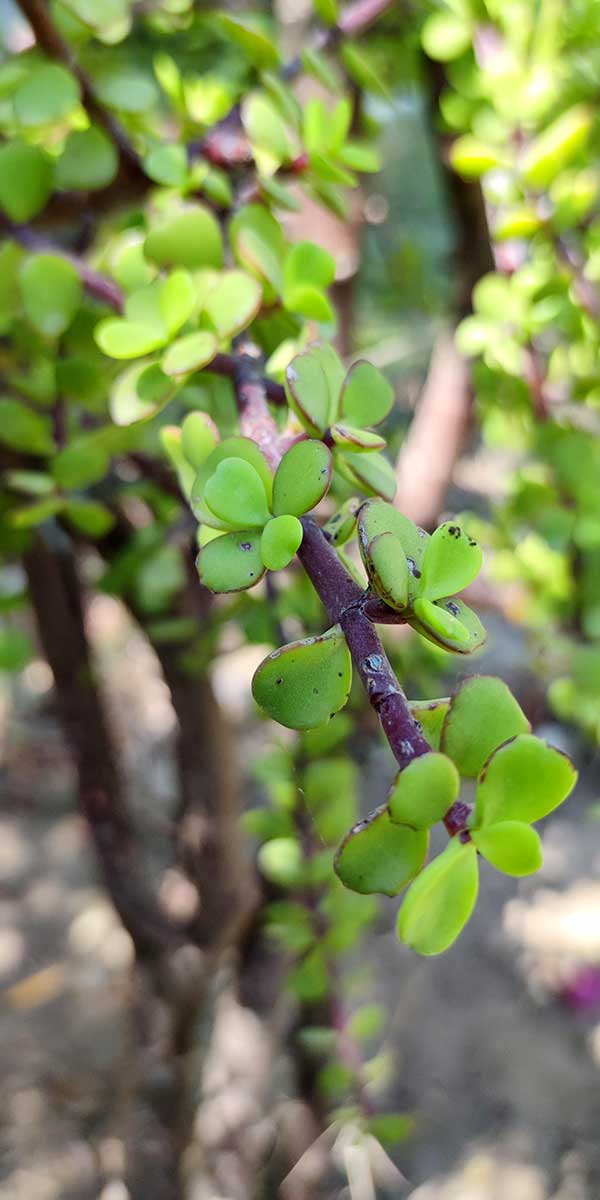
A third use of Portulacaria afra is as an air purifier. Portulacaria afra can absorb carbon dioxide and release oxygen at a higher rate than most plants, making it an effective plant for combating climate change and improving indoor air quality.
Portulacaria afra can sequester up to 4.2 tons of carbon dioxide per hectare per year, which is more than most tropical forests. You can grow Portulacaria afra indoors or outdoors to help reduce your carbon footprint and breathe cleaner air.
Portulacaria afra is truly a versatile and valuable plant that deserves a place in your garden or home.
Plant Varieties
Portulacaria afra is a diverse and versatile plant that comes in different varieties and cultivars. Some of them are naturally occurring, while others are bred in cultivation. Here are some of the most popular and common plant varieties of Portulacaria afra:
Portulacaria afra
This is the standard variety that has reddish-brown stems and small, round, green leaves. It can grow up to 5 meters tall in its natural habitat but usually stays smaller in cultivation. It is sometimes confused with Crassula ovata (jade plant), but it has smaller and rounder leaves and more compact growth.
Portulacaria afra ‘Variegata’
This is also known as tricolor or rainbow elephant bush. It has green leaves with white or cream variegation and sometimes pink edges. It is a sport (variant growth) of Portulacaria afra that appeared in cultivation. It is more sensitive to sunburn and frost than the standard variety.
Portulacaria afra ‘Minima’
This is also known as Prostrata, Decumbent, low form, or elephant mat. It has very small leaves and a trailing habit that makes it ideal for hanging baskets, pots, or ground cover. It is similar to Portulacaria afra ‘Aurea’, but with green leaves.
Portulacaria afra ‘Aurea’
This is also known as yellow or chartreuse elephant bush. It has yellow or light green leaves that turn brighter in full sun. It is similar to Portulacaria afra ‘Minima’, but with yellow leaves.
Portulacaria afra ‘Limpopo’
This is a variety with much larger leaves than the standard Portulacaria afra. It can grow up to 2 meters tall and has a bushy appearance. It is native to the Limpopo province of South Africa.
Portulacaria afra ‘Medio-picta’
This is a variegated variety that has green leaves with white stripes in the middle. Some leaves are completely white, creating a striking contrast. It has red-pink stems and a compact growth habit.
Portulacaria afra ‘Cork Bark’
This is a miniature jade that resembles a bonsai. It has a thick trunk with corky bark and small green leaves on reddish-brown stems. It can be pruned and trained into different shapes and styles.
These are some of the most common plant varieties of Portulacaria afra, but there may be more that are not yet discovered or named. You can choose the variety that suits your preference and growing conditions and enjoy this amazing succulent plant.
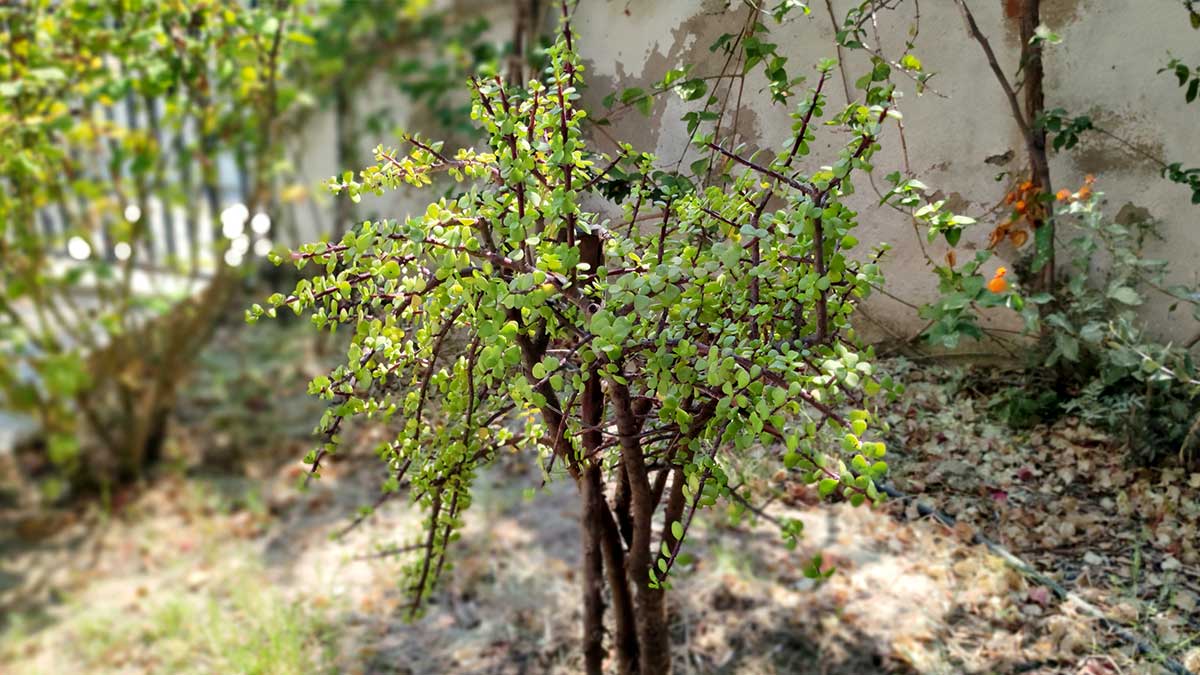
Conclusion
Portulacaria afra is a wonderful succulent plant that can grow indoors or outdoors, in sunny or shady spots, in dry or moist soils, and in warm or cool climates. It is also a plant that can provide you with food, medicine, and air purification, as well as beauty and joy.
Portulacaria afra is easy to grow, care for, and propagate, and it can live for a long time with minimal attention. Whether you want to grow Portulacaria afra as a houseplant, a bonsai, or a landscape feature, you will find useful tips and tricks in this article to make the most of this versatile succulent.
We hope you enjoyed reading this article and learned something new about Portulacaria afra. If you have any questions or comments about Portulacaria afra, feel free to share them in the comments section below. Thank you for reading, and happy gardening!
FAQ
Is Portulacaria afra toxic to pets?
No, Portulacaria afra is not toxic to pets and is safe to grow around them. However, you should still monitor your pets and prevent them from eating too much of the plant, as this may cause digestive upset or allergic reactions.
How often should I water my Portulacaria afra?
You should water your Portulacaria afra when the soil is completely dry, which may vary depending on the season, the climate, and the pot size. A good way to check the soil moisture is to insert your finger into it or use a moisture meter. You should water your Portulacaria afra thoroughly until the water drains out of the bottom of the pot, and then wait until the soil is dry again before watering.
How can I make my Portulacaria afra flower?
Portulacaria afra rarely flower in cultivation, but you can increase the chances of flowering by providing it with optimal conditions. Some factors that may trigger flowering are bright light, warm temperatures, long days, and dry periods. You can also prune your Portulacaria afra in spring or summer to stimulate new growth and flowering. The flowers are small and pink and appear at the branch tips in late spring or early summer.
Is elephant bush toxic to cats?
No. You may keep the Elephant Bush/Plant (Portulacaria afra) around your cats and dogs without worrying about it being poisonous to them.
